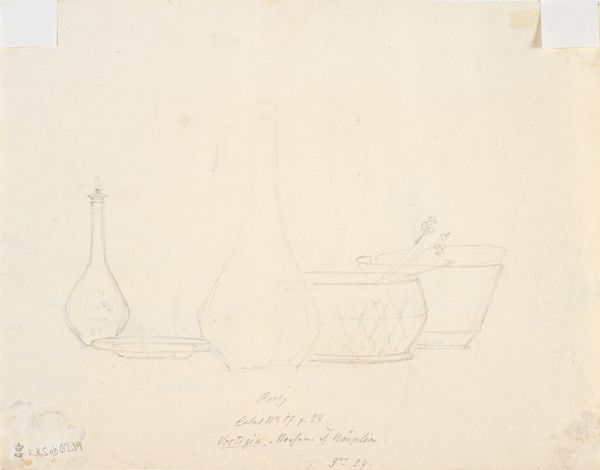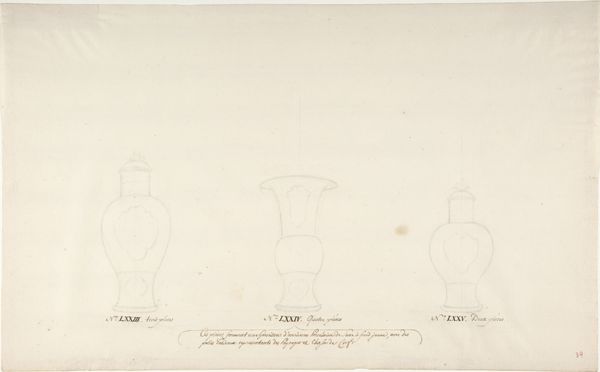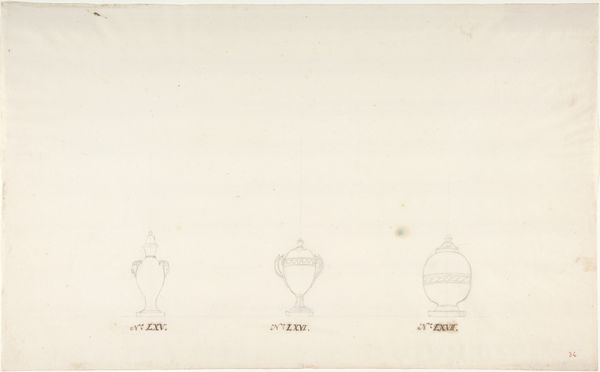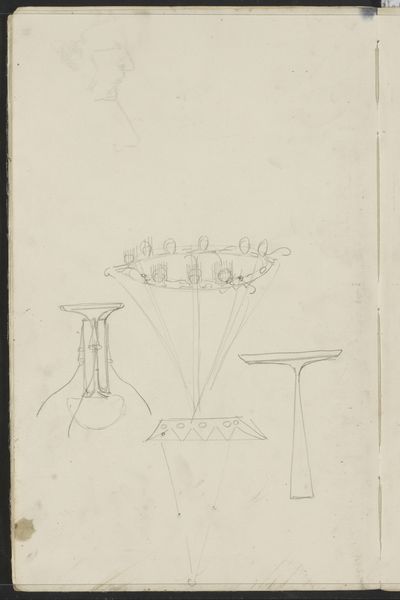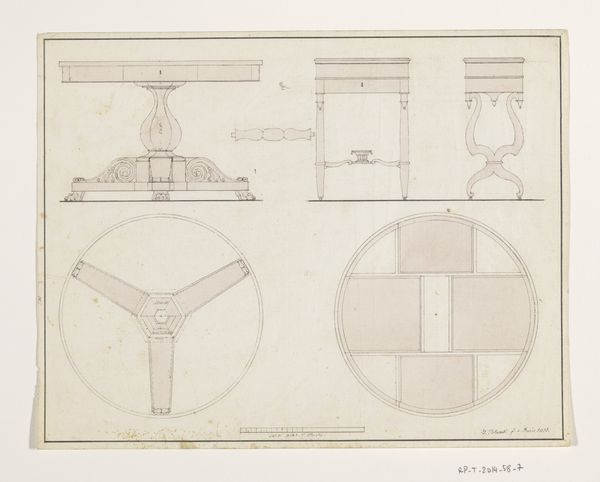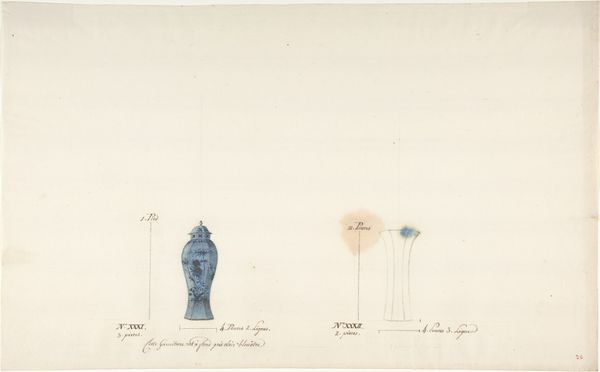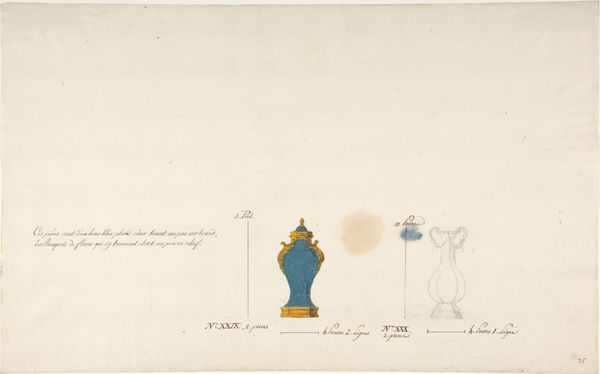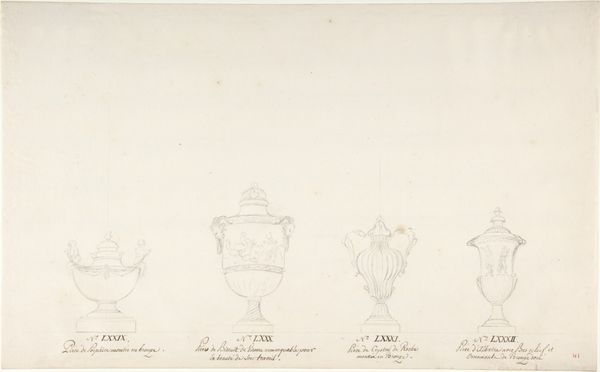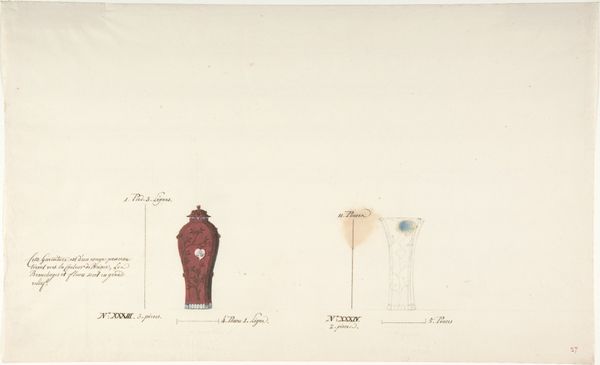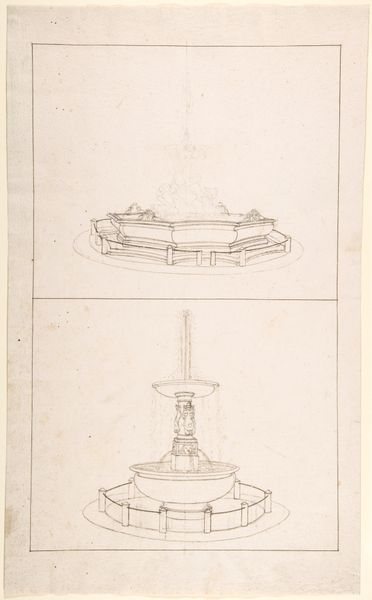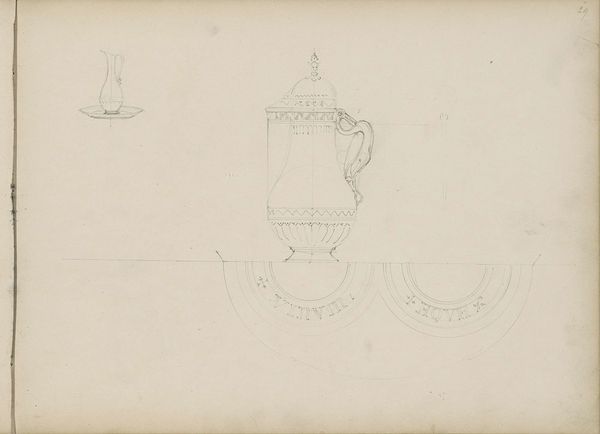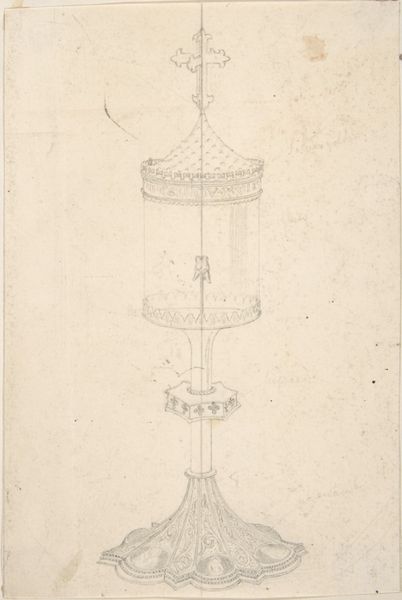
drawing, pencil
#
drawing
#
etching
#
vase
#
personal sketchbook
#
geometric
#
pencil
Dimensions: 14 13/16 x 9 3/16 in. (37.7 x 23.3 cm)
Copyright: Public Domain
Curator: The fragility is remarkable; so light you can almost not see it on the paper. Editor: Indeed. What we're looking at is a pencil and etching design for three vases, created between 1765 and 1790. It’s part of the collection at the Metropolitan Museum of Art. Attributed to an anonymous artist, these preliminary sketches provide a glimpse into the design process. Curator: Each vase seems to evoke different emotions. The leftmost feels sturdy, contained; a promise of holding something precious. The central one is more flamboyant, theatrical, and the last is simple, perhaps more spiritual, directing the eye upwards. What can you tell us about their place in society? Editor: Well, vase designs like these would have circulated among workshops and patrons. This was a time when the decorative arts played a central role in displaying social status and taste, not only the wealth but good taste. The vases themselves, once manufactured, would be objects in these fashionable spaces. This design is about cultural aspiration. Curator: And notice how, even in these minimal outlines, there's a clear understanding of symmetry and proportion. The empty space is part of what provides the symbolism—they feel quite different when you look at them next to each other, wouldn't you say? Editor: I agree. The negative space around the vases really defines them, each presented almost as a distinct character on a stage. In contrast, what appears beneath each vase almost suggests stage directions, furthering the design. I wonder how much room the artist had to diverge from the commission? Curator: The inscription provides a crucial insight into the purpose, reading 'ces vases peuvent non gravailles la maniere Porcelain la non douce.' To me, this indicates their value for imitation: like a portal. Editor: Absolutely. Looking at this simple sketch lets you imagine the lives of the artisans and wealthy families involved, which perhaps in turn teaches us how art objects gain power by association with each other in both personal and public spaces. Curator: What a wonderful little design to reflect upon. Thanks. Editor: Thank you!
Comments
No comments
Be the first to comment and join the conversation on the ultimate creative platform.

